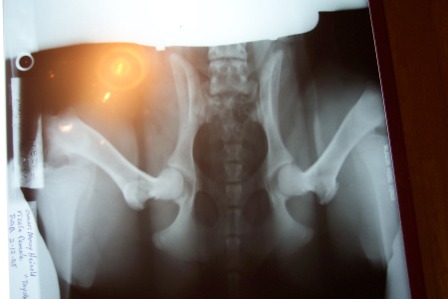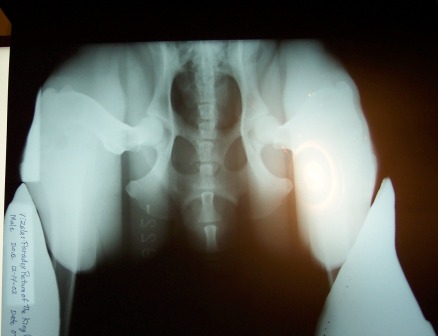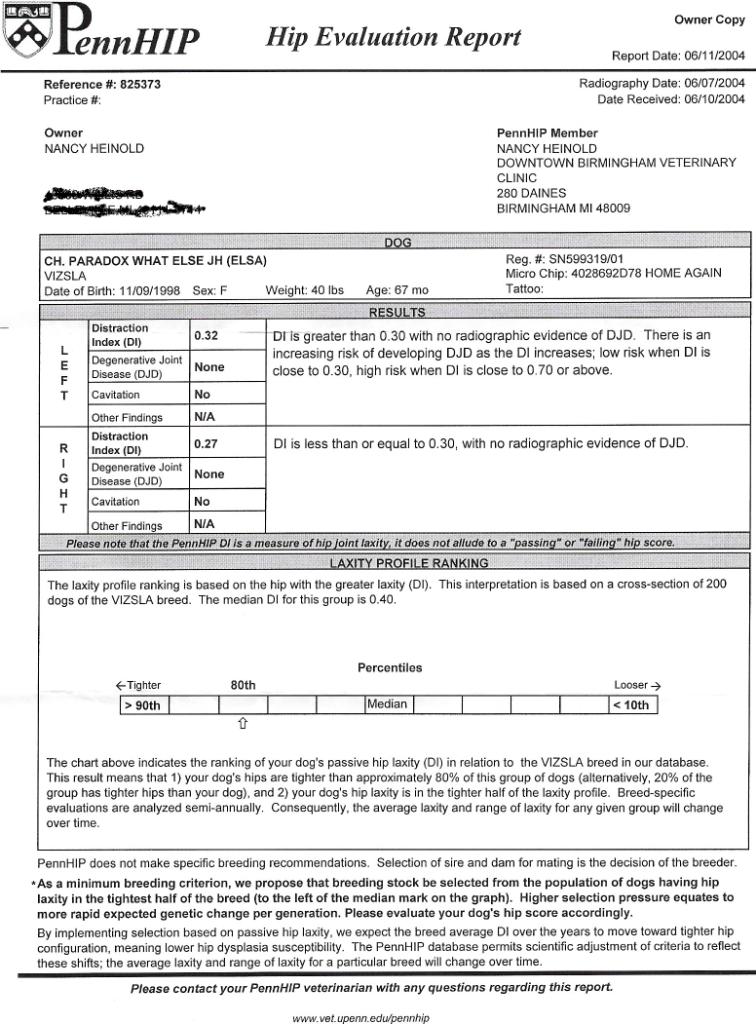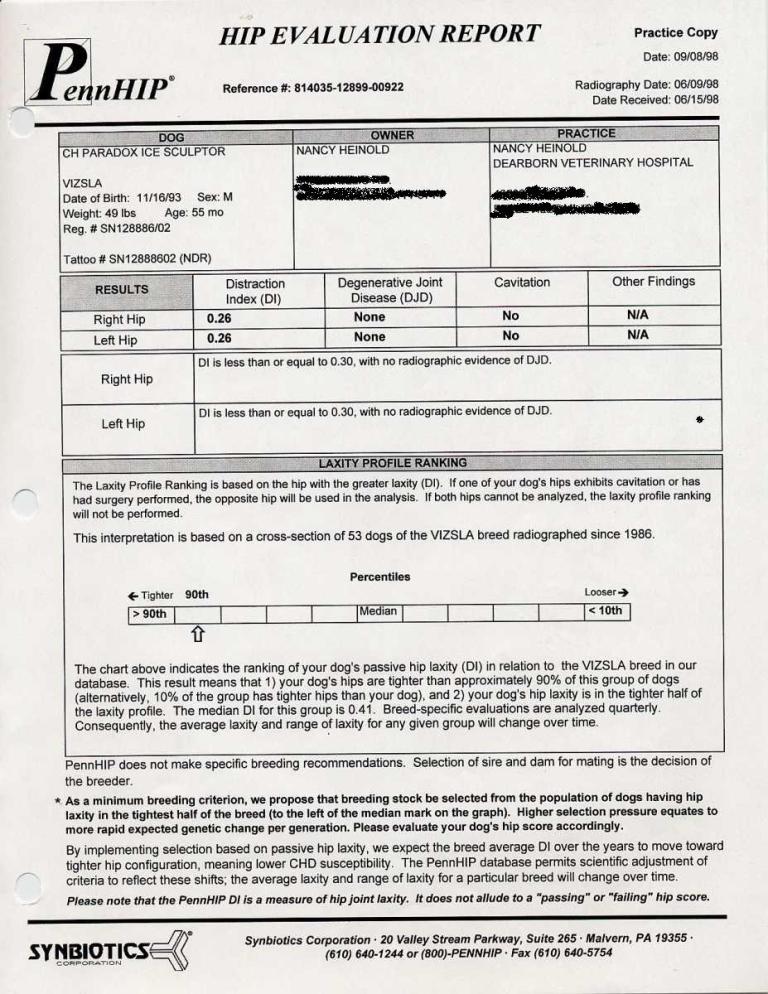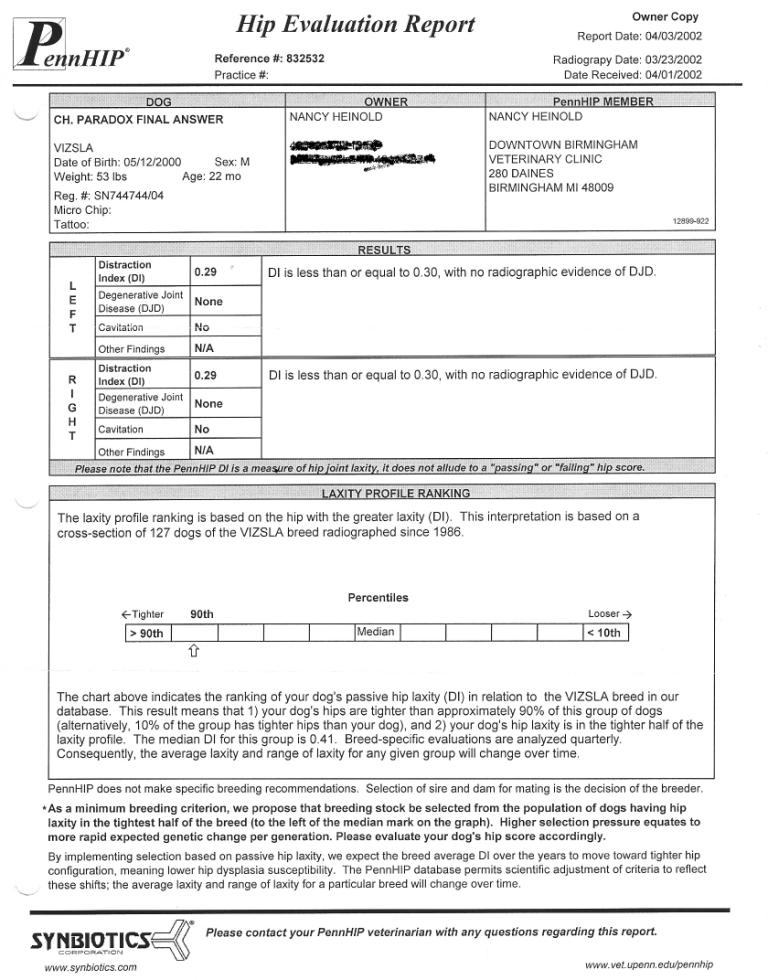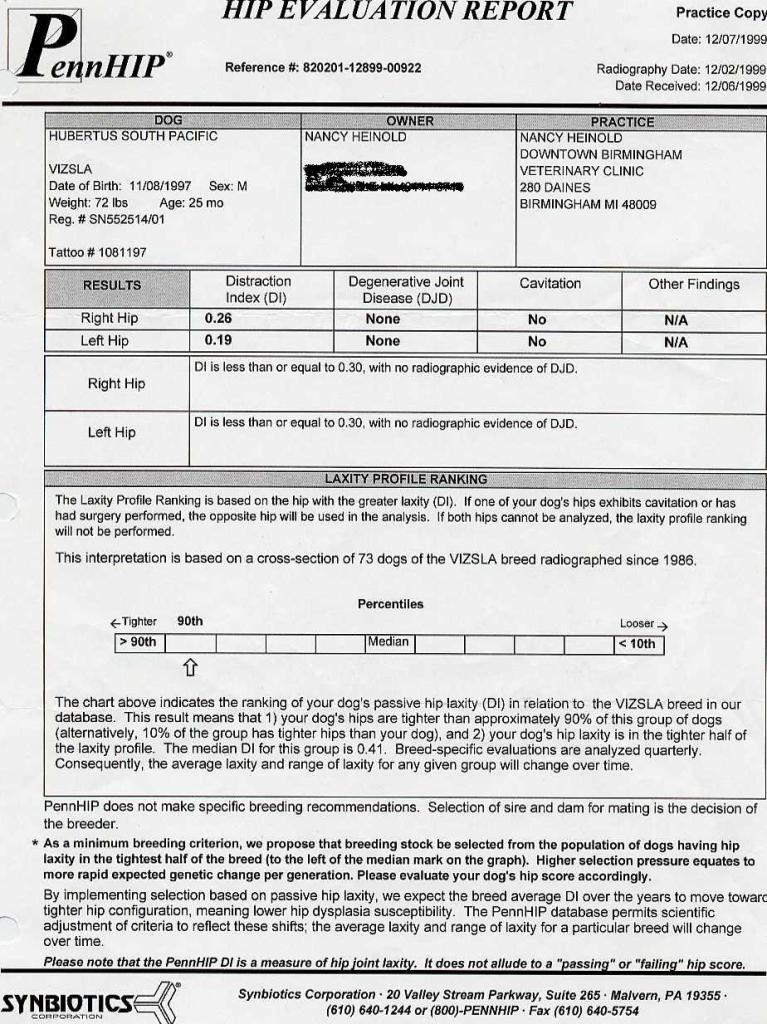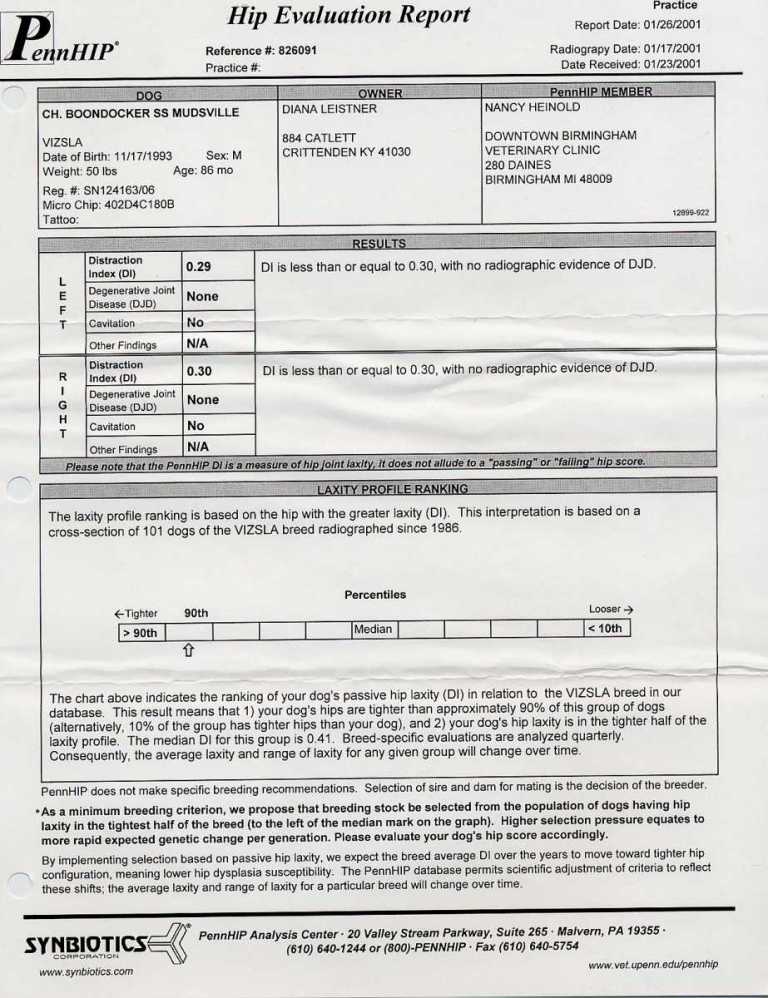PennHIP
At Paradox Vizslas we are using the PennHIP method to determine which dogs will or will not be bred instead of relying on the OFA method. We have used the Orthopedic Foundation for Animals( OFA) method since the Vizsla Club of America started the Breed Improvement Committee and the VCA designated the radiologist to have a Vizsla’s hip joints evaluated and passed for a BIC number.Without width in a pedigree where all puppies born were evaluated for hip dysplasia we still continued to see hip dysplasia in random puppies. The number of normal hip ratings in the depth of the pedigree was not a good predictor of hip ratings of the offspring.With the start of OFA the VCA started recognizing the findings of the OFA hip radiographs. We have been using tthe PennHIP method since 1998 and have been pleased with this screening test. PennHIP is a scientific method to evaluate a dog for its susceptibility to develop Hip Dysplasia.The radiographic procedure involves special positioning of the dog so that the dog’s “passive hip laxity”can be accurately measured.Passive hip laxity refers to the degree of looseness of the hip ball in the hip socket when the dog’s muscles are completely relaxed.Research has shown that the degree of passive laxity is an important factor in determining susceptibility to develop Degenerative Joint Disease (DJD) later in life. Radiographic evidence of DJD, also known as osteoarthritis,is the universally accepted confirmation of Canine Hip Dysplasia(CHD). HOW WAS PennHIP DEVELOPED? The development of PennHIP has involved multiple disciplines including biomechanics, orthopedics, clinical medicine, radiology,epidemiology and population genetics.The first phase of development involved sophisticated biomechanical testing to determine the optimal patient positioning for measuring hip laxity. By monitoring passive hip laxity in dogs as they matured, it was discovered that hip laxity was the primary factor in the development of DJD characteristic of CHD. That is, the radiographic expression of DJD was statistically significantly correlated with the degree of measured hip laxity. In addition, the CHD prediction was shown to increase over the four- month figures when hips were evaluated at 6 months and 12 months of age.In the same studies, it was shown that there was no statistically significant correlation between laxity and DJD when the standard hip extended view was used. In addition, no other method used to evaluate for CHD has undergone similar rigorous testing through controlled scientific studied to determine diagnostic accuracy. Penn HIP differs from the standard hip extended view in some fundamental and important ways. First, PennHIP was developed and tested following strict scientific protocol and the results of these studies have been published (and continue to be) in peer-reviewed, scientific journals. More than a decade of research and analysis has produced a body of information in support of PennHIP’s effectiveness.As with all diagnostic tests,PennHIP’s accuracy is not 100%, but in direct comparisons it is far superior to any other available diagnostic method. Second, passive hip laxity is objectively measured and the resulting Hip Evaluation Report is not issued in a pass/fail framework.PennHIP specifically measures passive hip joint laxity and includes the quantitative measurement in its report.Based on the degree of laxity, the individual dog is then ranked relative to other members of the same breed.For example a dog receiving a ranking in the 70th percentile means that thirty percent of its breed members have hips that are tighter. This allows breeders to easily identify those dogs with tighter hips within each breed. As shown in PennHIP studies, dogs with tighter hips are less likely to develop and pass the genetic tendency on to future generations. Third, because PennHIP is measuring maximal hip laxity, the position of the patient is very different from the hip-extended position(OFA view) .The hip extended position has been used for more than thirty years to screen hips for DJD, laxity or both.Laboratory studies have shown wide diagnostic variability between radiologists in interpreting this view.Through biomechanical testing, the hip -extended view was found to mask the underlying true hip joint laxity and the predictive value for CHD was shown to be inferior to the PennHIP procedure.The inheritability of the diseased phenotype scored in the hip-extended view has not been studied in most breeds of dogs.A knowledge of heritability is critical to determine whether selection pressure will produce genetic change. Estimates of heritability of passive hip laxity drawn from analysis of full pedigrees for the breeds examined thus far in the studies show high values(for the German Shepherd Dogs , heritabilty =0.61) Fourth, the PennHIP method is based on strict quality control. To take PennHIP radiographs, veterinarians must take training and a certification process to demonstarte competency. The data generated from PennHIP is reviewed regularly and statistically analyzed so that useful information, by breed, allows progress toward reducing CHD .It is imperative and required that ALL radiographs taken for PennHIP be submitted for evaluation and included in the data base for each breed. This allows accurate data for the incidence of hip dysplasia in each breed. During a PennHIP procedure the surrounding hip musculature must be relaxed.Sedation is needed to allow this to be done.Some veterinarians prefer general anesthesia.Three ragiographs are done for the procedure.First a VD extended view as done in OFA evaluations is done. If there is obvious dysplasia the veterinarian is required to finish the study for PennHIP.The second view is the compresson of the joints with the dog in an upside down natural stance.This view shows depth of socket and “fit” of ball in the socket. In same position a parallel bar is placed between the femurs and the femurs are pushed slightly toward this device to place a mild harmless force to measure the distraction of the hip joints.Passive laxity can be measured from this radiograph and is the best way to measure suseptibility to develop DJD.This procedure has been safely performed on over 45,000 dogs. This method can be performed on dogs as young as 16 weeks old.Breeders do not have to wait two years to evaluate breeding stock. The expense of this procedure is minimal compared to maintaining and competing with a dog for two years and find it not a candidate for their breeding program.Time,emotion and money is better spent looking for another dog and planning them a suitable mate, for the advancemnt of many other breed specific traits. Reference: PennHIP’s Questions and Answers about PennHIP: A New Scientific Method For Early Screening for Hip Dysplasia
80th percentile on 5 month old puppy
90th percentile rating
![]()

